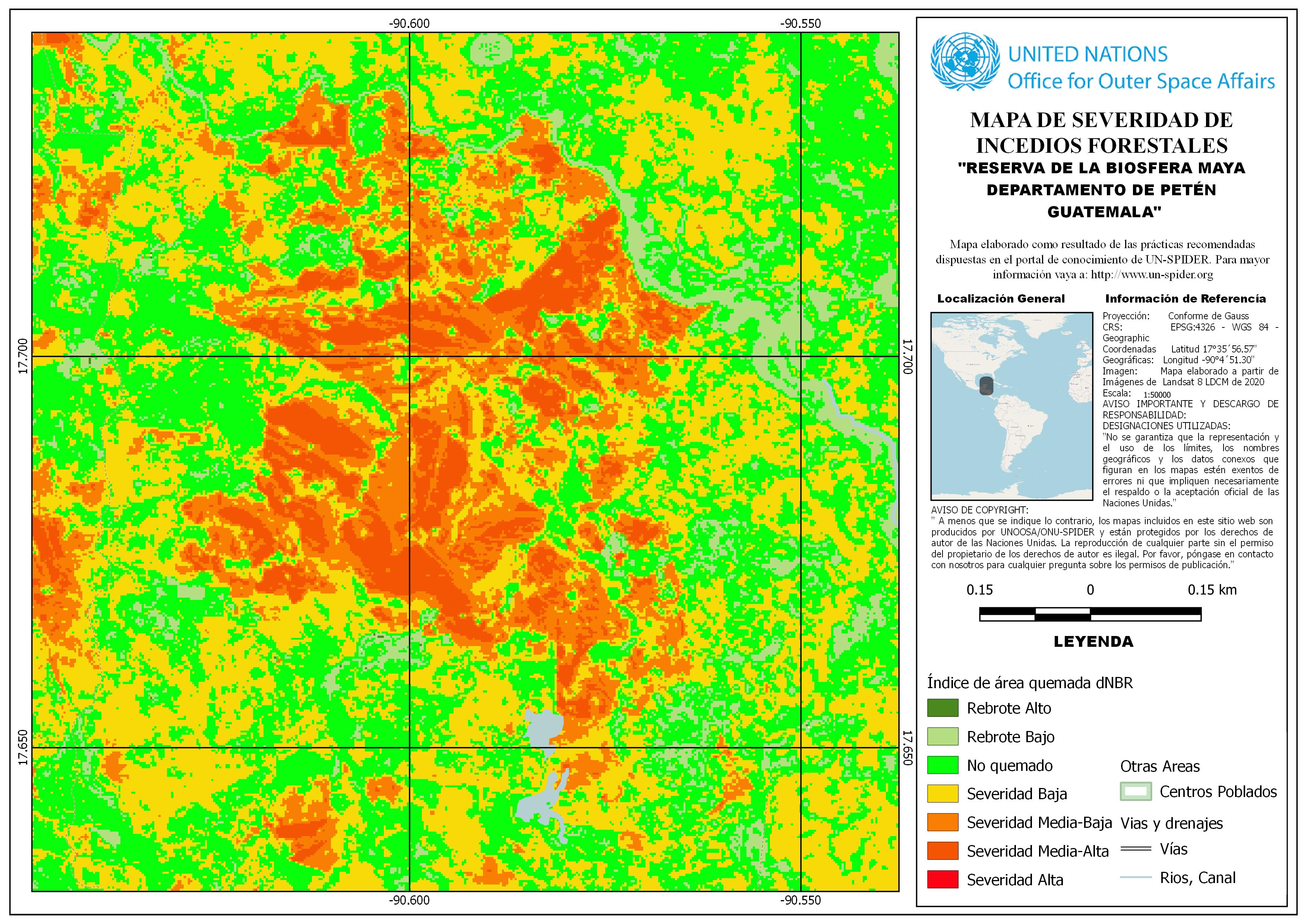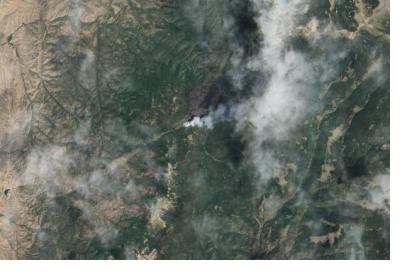At the end of April and the beginning of May 2020, Peten, the northern province or department of Guatemala, experienced severe forest fires that forced Guatemala’s National Coordinating Agency for Disaster Reduction (CONRED) to request the activation of the International Charter Space and Major Disasters to map the geographical extent of the fires.
To support members of Guatemala’s technical, inter-institutional, GIS and remote sensing team for disaster management (GT-SIGER) in addressing the fires and their impact, Dr. Alexander Ariza, a visiting scientist with the UN-SPIDER programme, conducted a webinar on 7 May 2020 to highlight online products and resources that are available to map the burn severity of forest fires.
Forest fires have a major influence on ecosystems and contribute to climate change as they alter the density, composition and spatial extent of ecosystems. Depending on the degree and intensity of the fire, the alteration can be classified as low, moderate or severe. The knowledge concerning the frequency and severity of forest fires is essential to develop a strategy to prevent, mitigate and combat forest fires in those regions where such fires are frequent.

Click map to enlarge
The webinar focused on novel methods to map and analyse the burn severity of forest fires and provided participants an overview of satellite imagery and web-based resources that are currently available, including those developed by the European Space Agency (ESA) and National Aeronautics and Space Administration (NASA). Dr. Ariza presented examples of the use of these tools to map the geographical extent and burn severity of forest fires impacting areas of Peten. He presented results extracted from Landsat 8 and Sentinel 2 satellite imagery. He also made participants aware of the need for measurements in the field just after the forest fires (Post-Fire Effects - PFE-) through the use of the the Compsite Burn Index (CBI, developed by Key and Benson, 2002) and its variant, the GeoCBI (De Santis and Chuvieco, 2009). In his presentation, Dr. Ariza also highlighted results of analyses related the areas affected by the forest fires, which were completed using cloud computing tools for analyzing geospatial data such as Google Earth Engine (GEE). In addition, he presented an analysis of different products and services which are available on the web, including datasets and online repositories such as GIO-GL1, GFED4-MCD64A1, and FireCCI51.
The webinar also included a short presentation on the Latin American Network for Forest Fire Tele-detection (RedLATIF). This regional network aims to unite efforts in the field of observation and management of forest fires in all Latin American countries using remote sensing and other geospatial technologies. It is closely linked to the international network on Global Observations of Forest and Land Cover Dynamics (GOFC/GOLD). The webinar was very useful for participants from Guatemala’s National Institute of Forests (INAB), who took note of these tools and provided the opportunity for these participants to meet and establish contact with Dr. Ariza and with the representative of RedLATIF.

